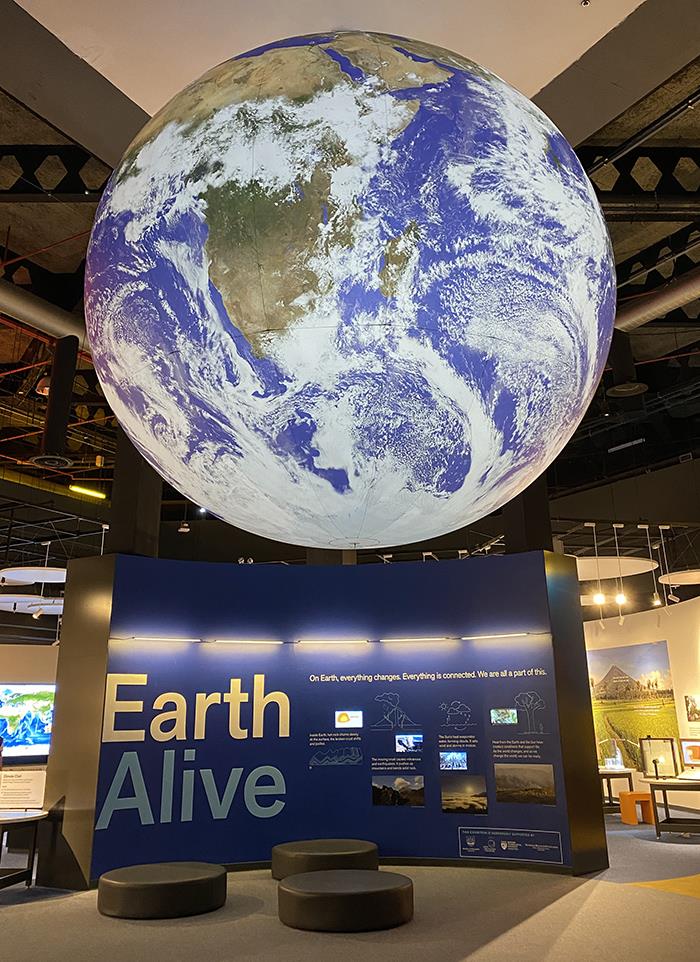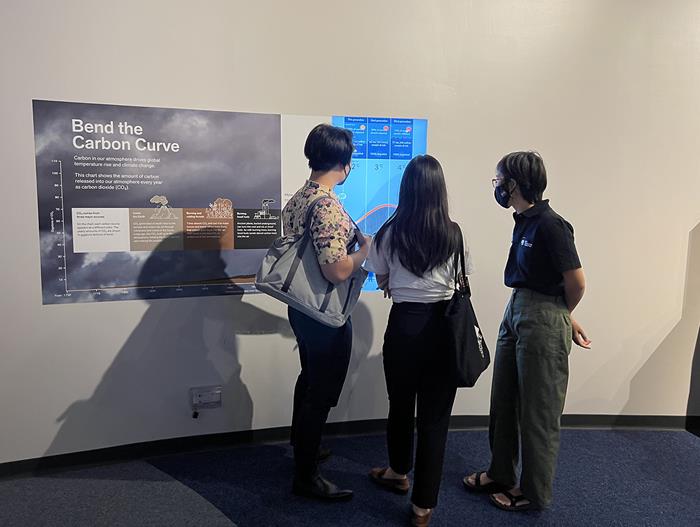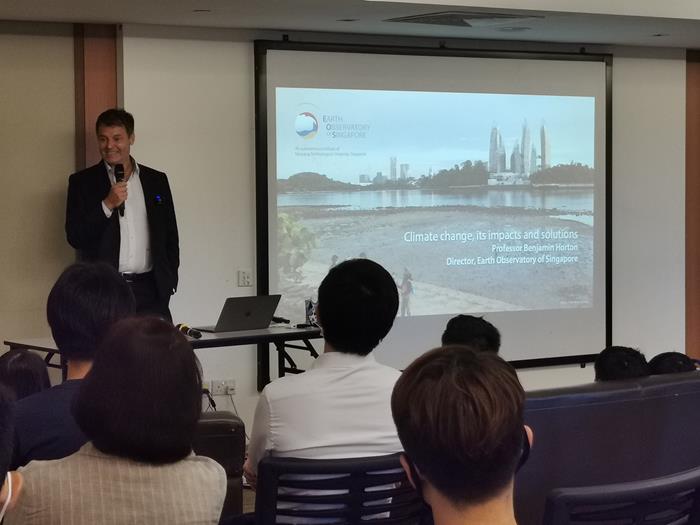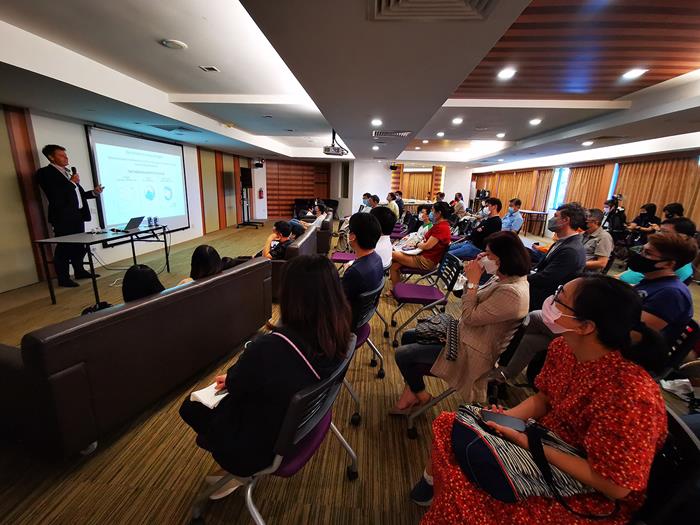Did you know that Earth Day was first celebrated in 1970?
Since then, on April 22 each year, more than one billion people across the globe commemorate Earth Day to highlight the importance of protecting and preserving the environment for future generations. Read on to find out how the Earth Observatory of Singapore (EOS), celebrated this year!
This year, the Earth Observatory of Singapore (EOS) co-hosted an Earth Day event with Science Centre Singapore (SCS). At the event, visitors to SCS could visit the Earth Alive exhibition and attend a public lecture by EOS Director Professor Benjamin Horton. The event aimed to encourage people to “invest in our planet”, the official theme of this year’s Earth Day.

Entrance of the Earth Alive exhibition at Science Centre Singapore (Source: Cheryl Han/Earth Observatory of Singapore)
Learning and fun at the Earth Alive exhibition
At Earth Alive, a collaborative exhibition between EOS and SCS, visitors learned about the various mechanisms that drive Earth’s geological phenomena and climate change, as well as the actions we can all take to mitigate and adapt to climate impacts.

Visitors learn more about carbon emission impact models from EOS staff (Source: Cheryl Han/Earth Observatory of Singapore)
A conversation on climate: Some hope in combating climate change
The highlight of the day was the special guest lecture by Prof Benjamin Horton, titled ‘Climate change, its impacts and solutions’.

Prof Horton greeting the audience and introducing the topics of discussion (Source: Victoria Khoo/Earth Observatory of Singapore)
Prof Horton was just metres away from the audience, allowing for a more personal and interactive engagement. The audience ranged from primary school-aged students and their parents, to working professionals with an interest in the topic. SCS also livestreamed the talk for viewers at home and for the other Earth Alive visitors on the exhibition’s ‘Earth Visualisation’ nine-screen display.
The lecture began with Prof Horton sharing his expertise on climate change. He clarified some scientific concepts, such as how Earth’s natural climate variability is a function of exposure to the sun. He reiterated that the current and unprecedented rate of climate change we are experiencing is due to human effects rather than natural variabilities.
He discussed topics ranging from the impacts of sea-level rise on Singapore’s urban landscape, to the feasibility of various climate change mitigation strategies like nature-based solutions. He also shared some light-hearted personal anecdotes as examples of how to reduce one’s carbon footprint by changing one’s consumption habits. For example, Prof Horton said that a simple thing he started doing many years ago was to exclude meat from his diet several times a week.
 Prof Horton explaining the science behind climate change to the audience (Source: Victoria Khoo/Earth Observatory of Singapore)
Prof Horton explaining the science behind climate change to the audience (Source: Victoria Khoo/Earth Observatory of Singapore)
Prof Horton stressed the need to consider the devastating consequences of climate change on future generations and reiterated the role individuals, businesses and policy makers can play in combating climate change. Some of these strategies include mitigation by reducing global carbon emissions and adapting to the known impacts of climate change such as sea-level rise.
During the Q&A session, Prof Horton answered a range of questions, from policy shifts and economic considerations in climate solutions such as the space conundrum for housing in Singapore, to the feasibility of certain nature-based solutions and other potential technologies.
One of the key takeaways from the fruitful discussion is the unique role a small nation like Singapore plays in the global fight against climate change. Another takeaway was a message of hope that Prof Horton shared: we can change the course of the future through education and action to protect our planet by working together with our communities so that our children and their children can thrive.